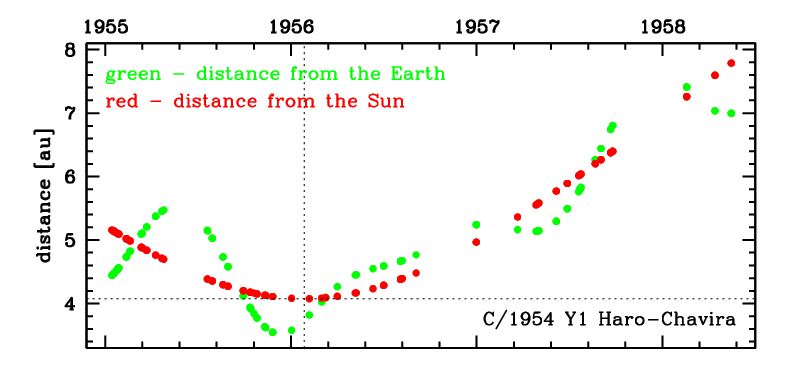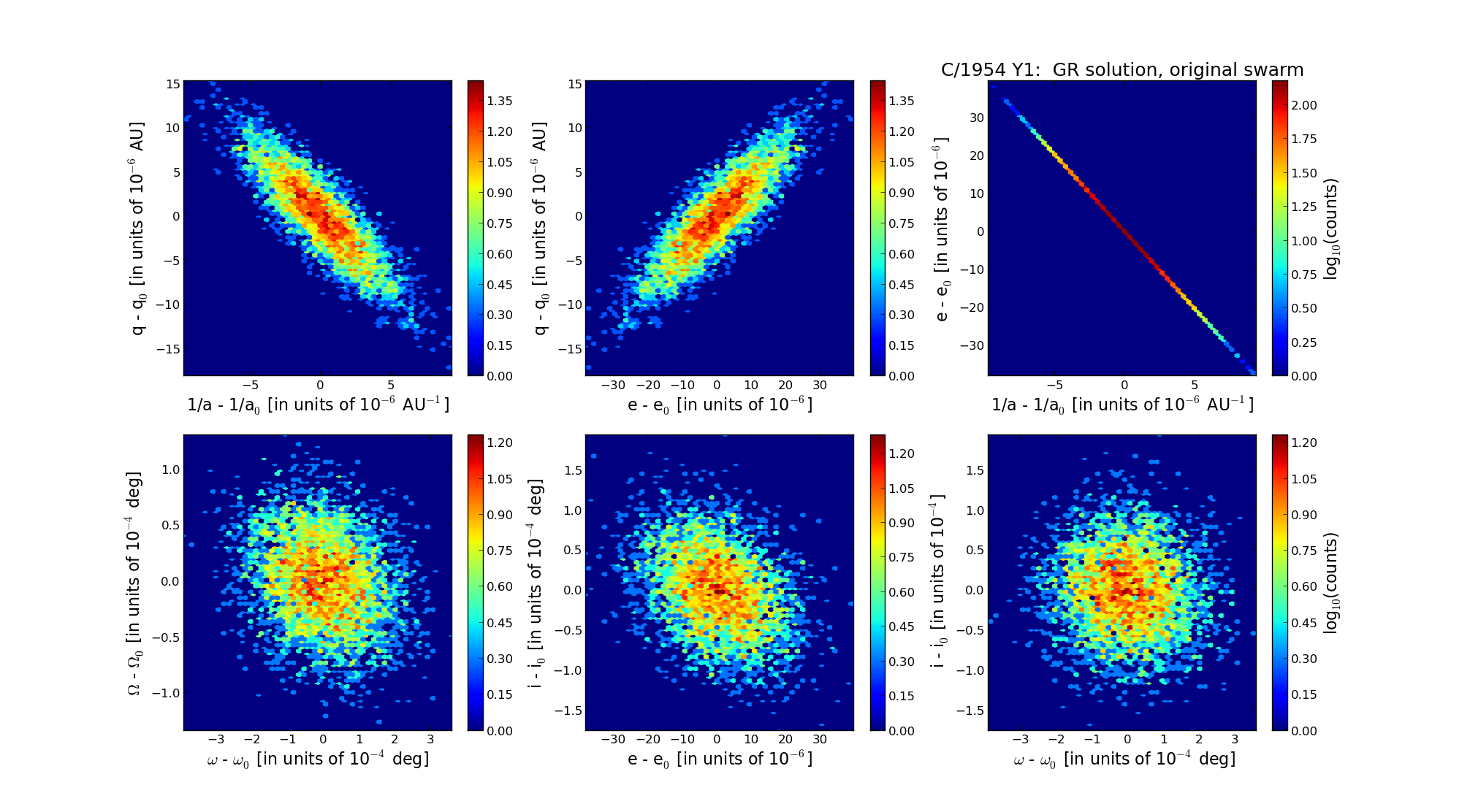C/1954 Y1 Haro-Chavira
more info
Comet C/1954 Y1 was discovered on 18 December 1954, about one year before perihelion passage, and was last seen on 15 May 1958 [Kronk, Cometography: Volume 4].
The comet made its closest approach to the Earth on 9 December 1955 (3.51 au), almost seven weeks before perihelion passage.
Solution given here is based on data spanning over 3.3 yr in a range of heliocentric distances: 5.16 au – 4.08 au (perihelion) – 7.79 au.
This Oort spike comet suffers small planetary perturbations during its passage through the planetary system that lead to escape the comet from the solar system on a hyperbolic orbit (see future barycentric orbit).
See also Królikowska and Dybczyński 2017.
The comet made its closest approach to the Earth on 9 December 1955 (3.51 au), almost seven weeks before perihelion passage.
Solution given here is based on data spanning over 3.3 yr in a range of heliocentric distances: 5.16 au – 4.08 au (perihelion) – 7.79 au.
This Oort spike comet suffers small planetary perturbations during its passage through the planetary system that lead to escape the comet from the solar system on a hyperbolic orbit (see future barycentric orbit).
See also Królikowska and Dybczyński 2017.
| solution description | ||
|---|---|---|
| number of observations | 97 | |
| data interval | 1955 01 13 – 1958 05 15 | |
| data type | perihelion within the observation arc (FULL) | |
| data arc selection | entire data set (STD) | |
| range of heliocentric distances | 5.16 au – 4.08 au (perihelion) – 7.79 au | |
| detectability of NG effects in the comet's motion | NG effects not determinable | |
| type of model of motion | GR - gravitational orbit | |
| data weighting | YES | |
| number of residuals | 181 | |
| RMS [arcseconds] | 0.98 | |
| orbit quality class | 1a | |
| orbital elements (barycentric ecliptic J2000) | ||
|---|---|---|
| Epoch | 1652 02 10 | |
| perihelion date | 1956 01 27.13932759 | ± 0.00081614 |
| perihelion distance [au] | 4.07097096 | ± 0.00000452 |
| eccentricity | 0.99984448 | ± 0.00001082 |
| argument of perihelion [°] | 57.447014 | ± 0.000104 |
| ascending node [°] | 72.821449 | ± 0.000037 |
| inclination [°] | 79.681137 | ± 0.000048 |
| reciprocal semi-major axis [10-6 au-1] | 38.20 | ± 2.66 |
| file containing 5001 VCs swarm |
|---|
| 1954y1a5.bmi |

